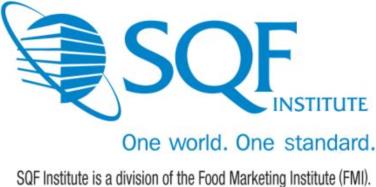SAFFRON
The use of saffron as a yellow colorant dates back to before the 23rd century B.C. It is made by collecting the stigmas of the flower of the crocus bulb: Crocus sativin. Flowers are grown worldwide, with the majority coming from Iran. Saffron from this area is of high quality as the individual stigmas are carefully selected before processing. The high hand labor involved, coupled with the amount of flowers to be picked (about 15,000 are required to produce 1 kg of colorant) contribute to its very high cost. Political events have caused artificial shortages, creating availability problems and significant cost increases. These problems limit saffron usage.
Saffron colorant (crocin and crocetin) is chemically similar to annatto and zeozanthan. The carotenoid has a simple sugar linked to the basic chain, giving it water solubility and possibly improved light stability compared to turmeric. Saffron powders contain beta-carotene, zeozanthan and other carotenoids, the amount of which varies by growing region and handling procedures.
Saffron powder is water soluble and high in tinctorial strength. Saffron solutions are stable to light, oxidation, pH and microbial spoilage. In water, saffron gives a bright yellow at low concentrations, and a golden yellow at higher concentrations.
Saffron for use as a colorant is available as a powder and a liquid (usually 5%-8%). It has been suggested, but not universally accepted, that it be evaluated on carotenoid content via a spectrophotometer reading at 440 nm.
It has found use as a substitute for turmeric where light exposure would cause fading of turmeric. It has been used as a substitute for FD&C Yellow No. 5. It has been used in beverages, cosmetics, and pharmaceuticals at low levels due to its high cost. ColorMaker often supplies both powder and liquid (2 to 10 %) forms, but always check on commercial availability before formulation work begins.
-----
SPECIAL NOTE: Prior to the on-again, off-again, on-again sanctions of the US Government against products from the Islamic Republic of Iran, we imported and sold late-season saffron as a natural yellow colorant. Almost the entire world's supply of saffron comes from Iran.
As you may recall, US sanctions against products from the Islamic Republic of Iran began in 1979 under President Carter; were expanded in 1994 under President Clinton; were relaxed in 2015 under President Obama; and were expanded again in 2018 under President Trump. In response to ever-changing US foriegn policy, we stopped importing saffron from the Islamic Republic of Iran in 2018 (about one year pror to the Global Pandemic). At that time, we formulated a blend of different beta-carotenes that developed a saffron-like color. At that time, all our customers switched and changed their label declarations from "saffron (for color)" to "beta-carotene (for color)." Note that none of our customers used saffron for flavor. For this reason, the switch was comparatively easy.
As of 2023, we still do not import saffron -- for color -- from the Islamic Republic of Iran.












